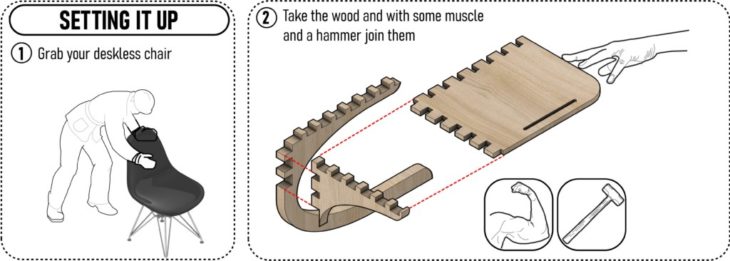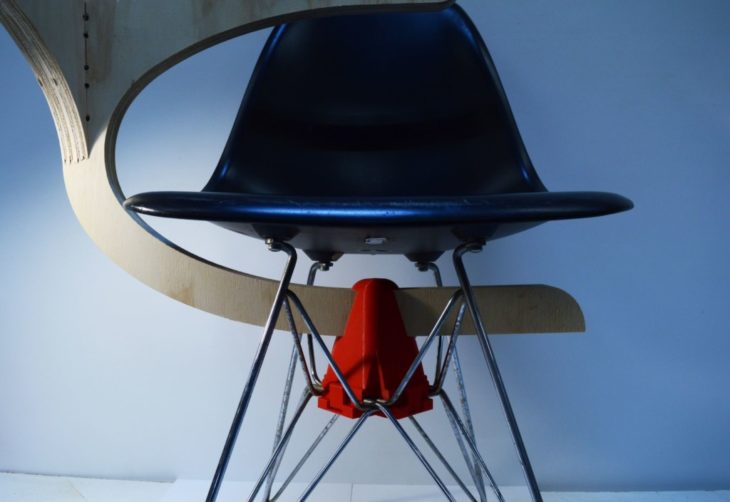
The tabletop connects with the Eames-Vitra chair via the central piece, specifically designed to rigidly attach to the chair’s under-structure and insure a stable working surface.
“The Pupitre” —meaning school desk in Spanish—tackles the basic student needs during class time specifically notetaking whatever stationary (laptop, notebook, pencils etc. ) this might entail. The curvature of the piece responds to the original Eames Vitra chair, so common in classrooms around the world, including our very own Valldaura campus. The table top, made of 3 main pieces that join seamlessly without the need of screws is designed for an easy at-home assembly experience.
The kit includes the attachment which enables the connection between tabletop and chair. Firstly, the user is prompted to attach the custom PLA 3D printed piece which can conveniently be clipped on and off the chair at any time. Secondly, the user slips the desk inside the piece and is ready for use. Finally, once finished using “The Pupitre”, the user may easily stack it due to its weight and curvature. Moreover, this lightweight design allows the kit to be shipped for a presumably low-cost.
The prototype used an estimated ¼ of a 1.5mx2.4mx0.15m plywood sheet, this means that with optimal use of material a single sheet can produce 4 desks. The goal of this project was ultimately to provide easy replicability and optimal use of material for the production of an affordable desk in any Fab-Lab worldwide.

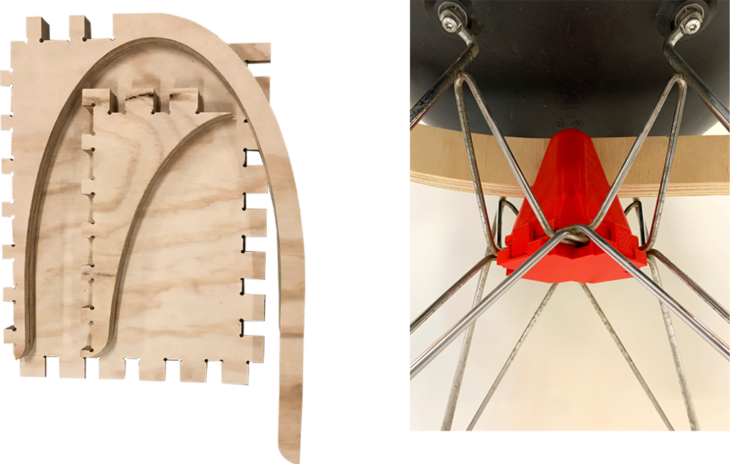
The central piece is specifically designed for the Eames-Vitra chair model and receives the tabletop to create a solid and stable writing surface.
ASSEMBLY INSTRUCTIONS
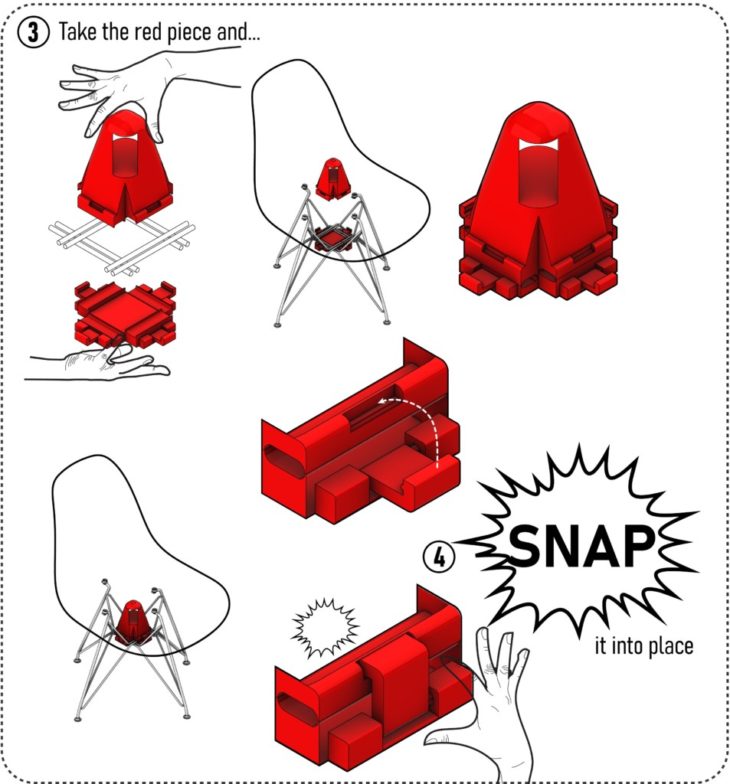
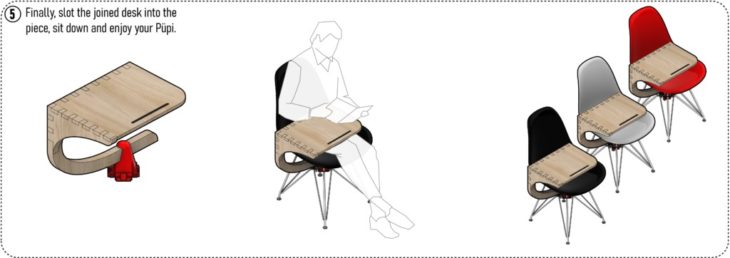
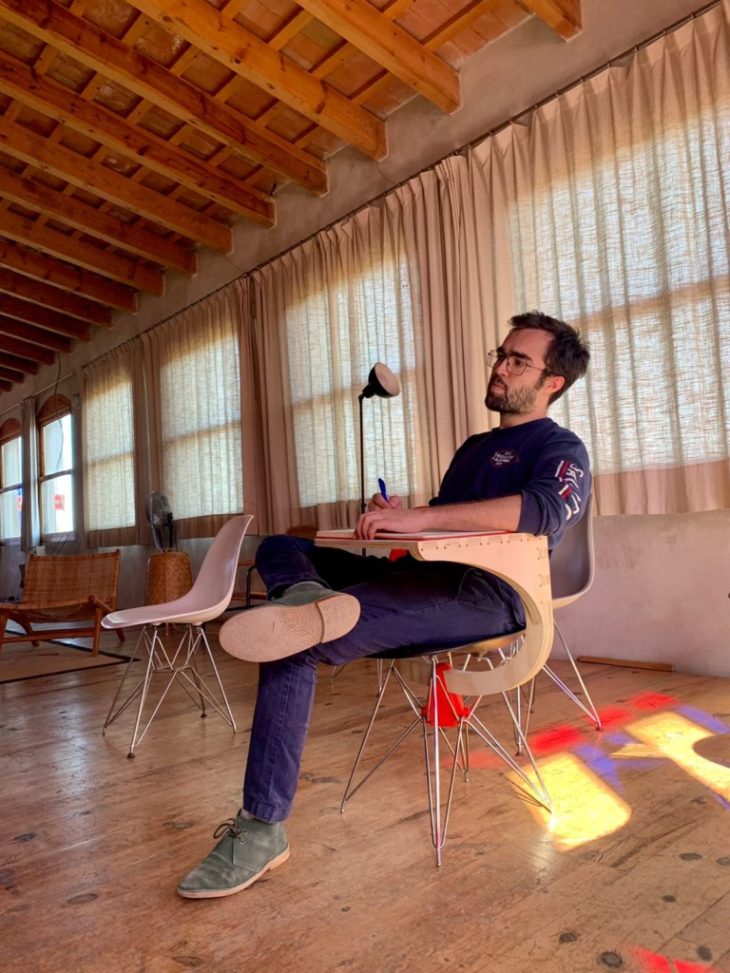
The “pupitre” gets attached to the chair allowing sufficient room for free-body movement
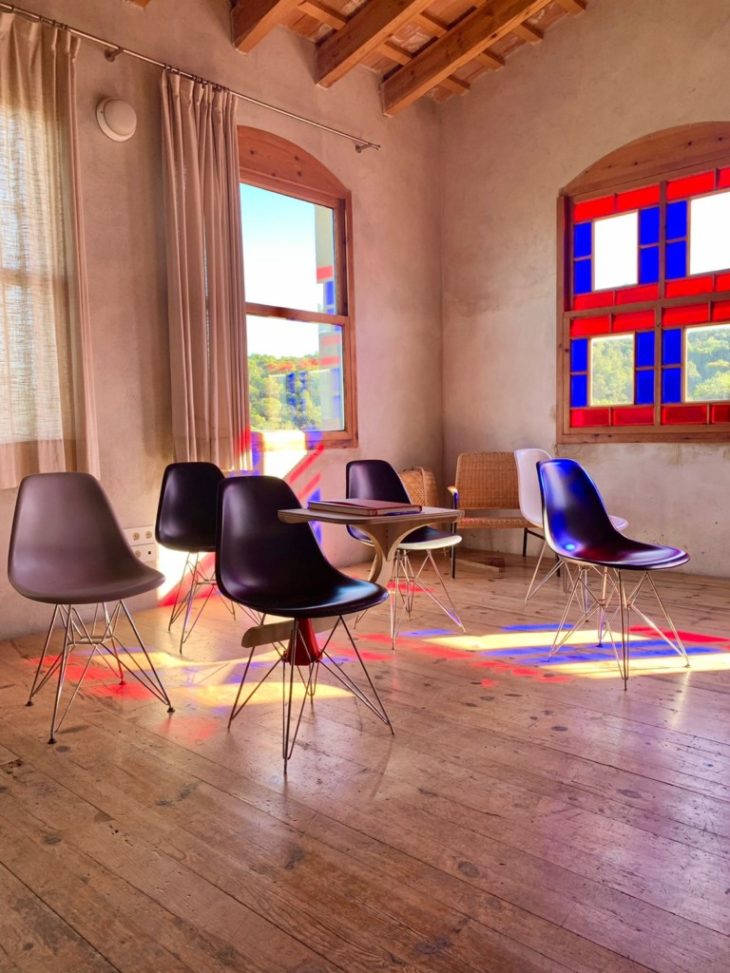
The “pupitre” can be left on the chair for later use…

… or the tabletop can be removed and easily stacked and stored.
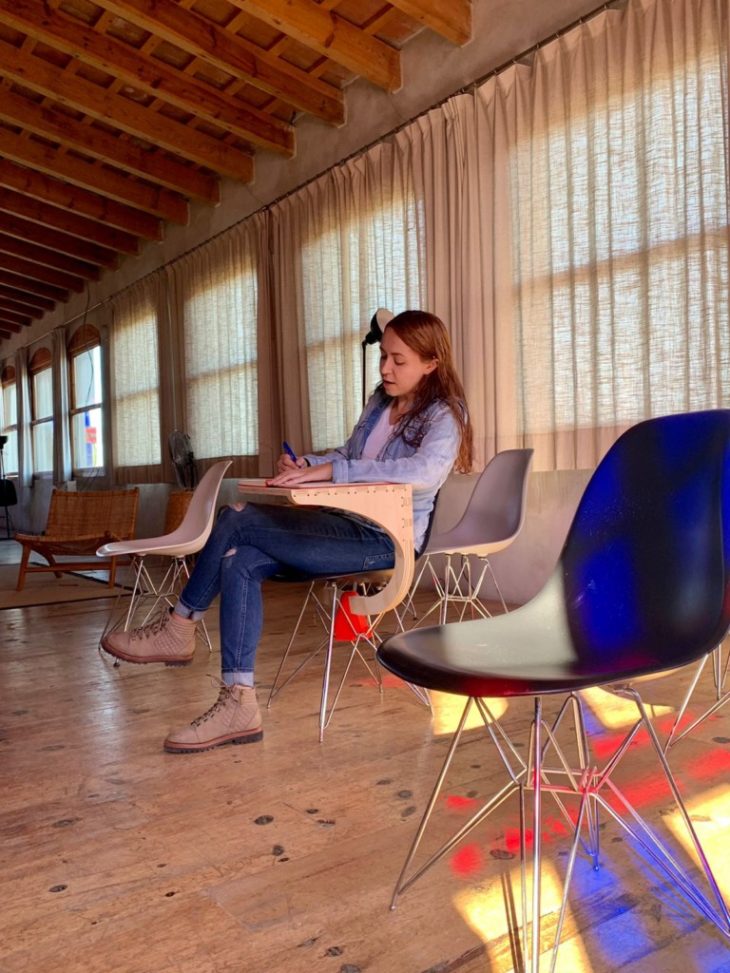
The “pupitre” can be easily adapted to a classroom setting.
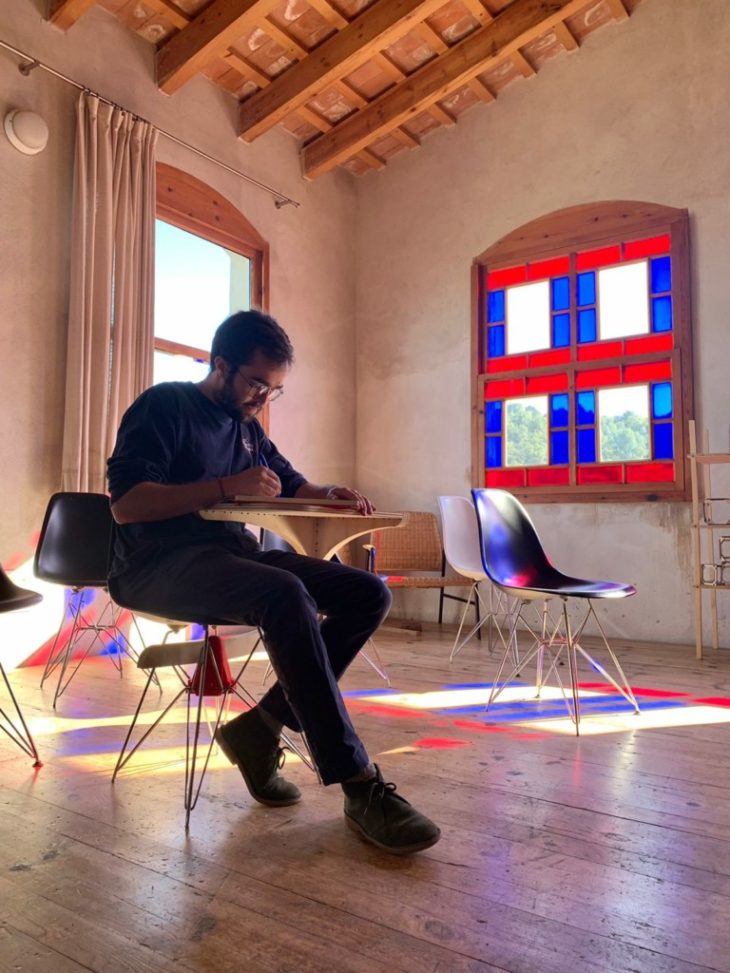
A student at happily at work in the classroom.
“The Pupitre” is a project of IAAC, Institute for Advanced Architecture of Catalonia, developed at Masters in Advanced Ecological Buildings and Biocities in 2021-22 by:
Students: Pablo Herraiz García de Guadiana and Andrea Paola Rubio Paredes
Faculty: Bruno Ganem Coutinho
